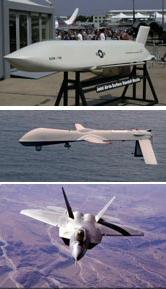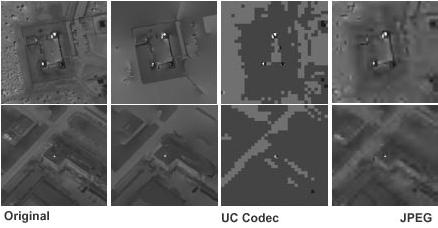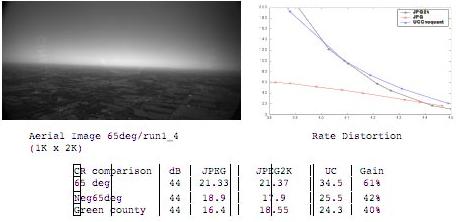




|
Image/Data Modeling and Compression According to UtopiaCompression(UC), highly efficient image compression should be concerned with novel ways of representing visual patterns using a minimal set of extracted features. This view requires application of Artificial Intelligence (AI), in particular Machine Learning (ML), to extract primitive visual patterns; then train the codec on and generate a knowledge base of such primitive patterns so that at runtime coarse, grainy segments of the image can be accurately modeled without needing to decompose the segments, thus giving rise to significant improvement in compression performance. An adaptive pattern-driven (also known as content-based or knowledge-based) approach mines pertinent features belonging to patterns, which upon training can efficiently model and represent image contents. UC’s pattern-driven codec, upon trained on an image repertoire from a class of images having similar characteristics delivers superior and faithful compression performance. Focusing on the extraction/modeling of primitive patterns and their features, the pattern based codec is designed to be adaptive to class characteristics of patterns. Adaptation to patterns defining image classes leads to:
UC, through efforts, has:
 Application of UCís compression technologies to three DoD programs: JASSM, Predator and F/A 22 The efficiency and effectiveness of UCís innovative compression technologies has been demonstrated for a number of Government sponsored programs.
JASSM Program  Compression Rate = 109 for UC and JPEG2K
Compression ratio around 57 for JPEG
Predator Program  Compression results for Aerial Imagery As a part of our Enhanced Image Capture and Transmission program, UC applied its compression algorithm to aerial images shot from predator aircrafts. The images have sky in the upper half of the image which is normally smooth. The lower half is usually ground and higher textured. UC codec performed significantly better than the JPEG and JPEG 2K at high PSNRs for this class of images.
F/A-22 Program  Compression results for SAR imagery via SRAD processed (left) and segmented (right) |
||
Home | Company | Research and Development | Careers | News | Contact
© 2007 UtopiaCompression. All Rights Reserved.